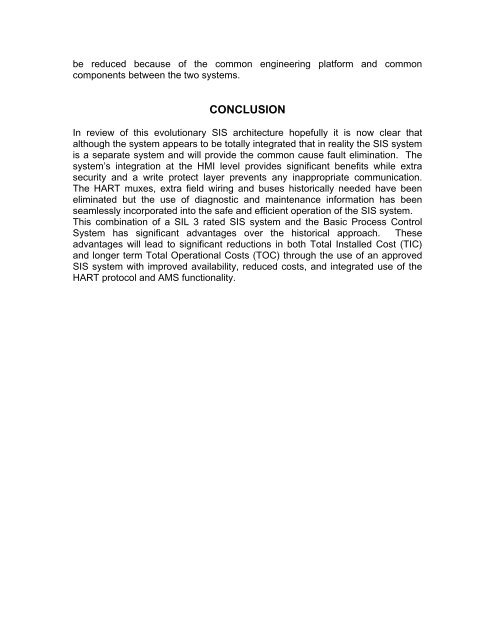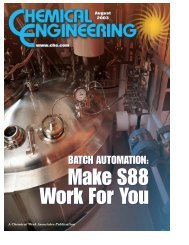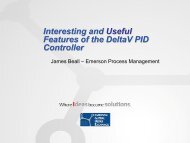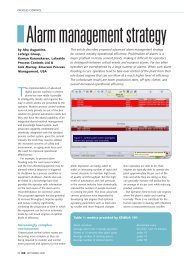safety instrumented systems: can they be integrated but separate
safety instrumented systems: can they be integrated but separate
safety instrumented systems: can they be integrated but separate
You also want an ePaper? Increase the reach of your titles
YUMPU automatically turns print PDFs into web optimized ePapers that Google loves.
e reduced <strong>be</strong>cause of the common engineering platform and commoncomponents <strong>be</strong>tween the two <strong>systems</strong>.CONCLUSIONIn review of this evolutionary SIS architecture hopefully it is now clear thatalthough the system appears to <strong>be</strong> totally <strong>integrated</strong> that in reality the SIS systemis a <strong>separate</strong> system and will provide the common cause fault elimination. Thesystem’s integration at the HMI level provides signifi<strong>can</strong>t <strong>be</strong>nefits while extrasecurity and a write protect layer prevents any inappropriate communication.The HART muxes, extra field wiring and buses historically needed have <strong>be</strong>eneliminated <strong>but</strong> the use of diagnostic and maintenance information has <strong>be</strong>enseamlessly incorporated into the safe and efficient operation of the SIS system.This combination of a SIL 3 rated SIS system and the Basic Process ControlSystem has signifi<strong>can</strong>t advantages over the historical approach. Theseadvantages will lead to signifi<strong>can</strong>t reductions in both Total Installed Cost (TIC)and longer term Total Operational Costs (TOC) through the use of an approvedSIS system with improved availability, reduced costs, and <strong>integrated</strong> use of theHART protocol and AMS functionality.






